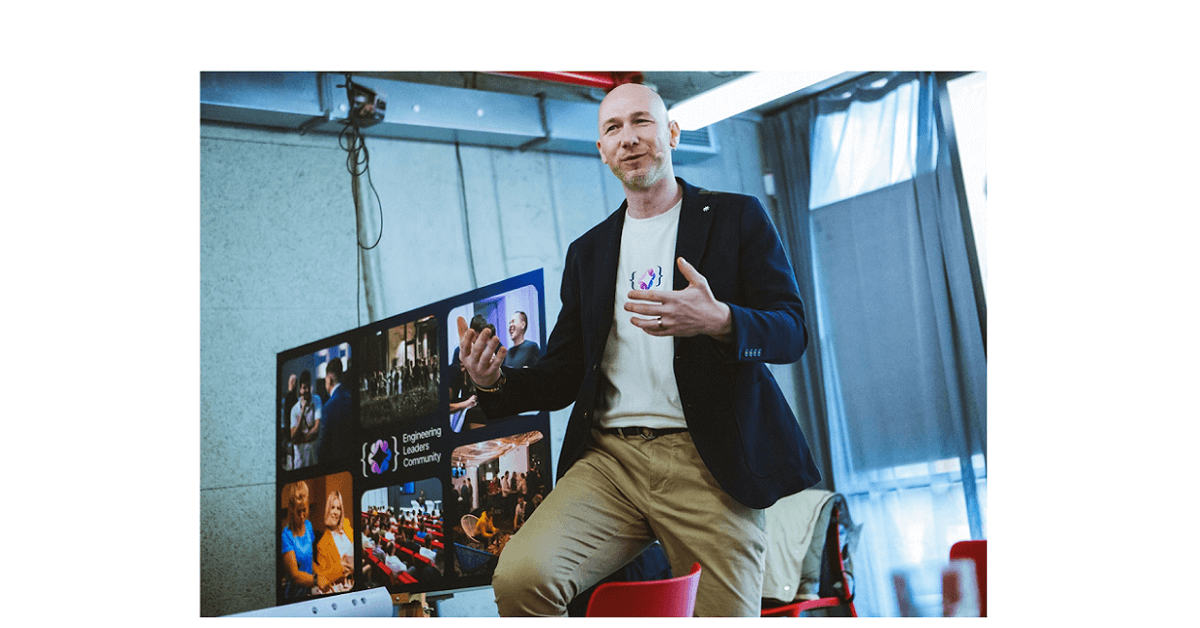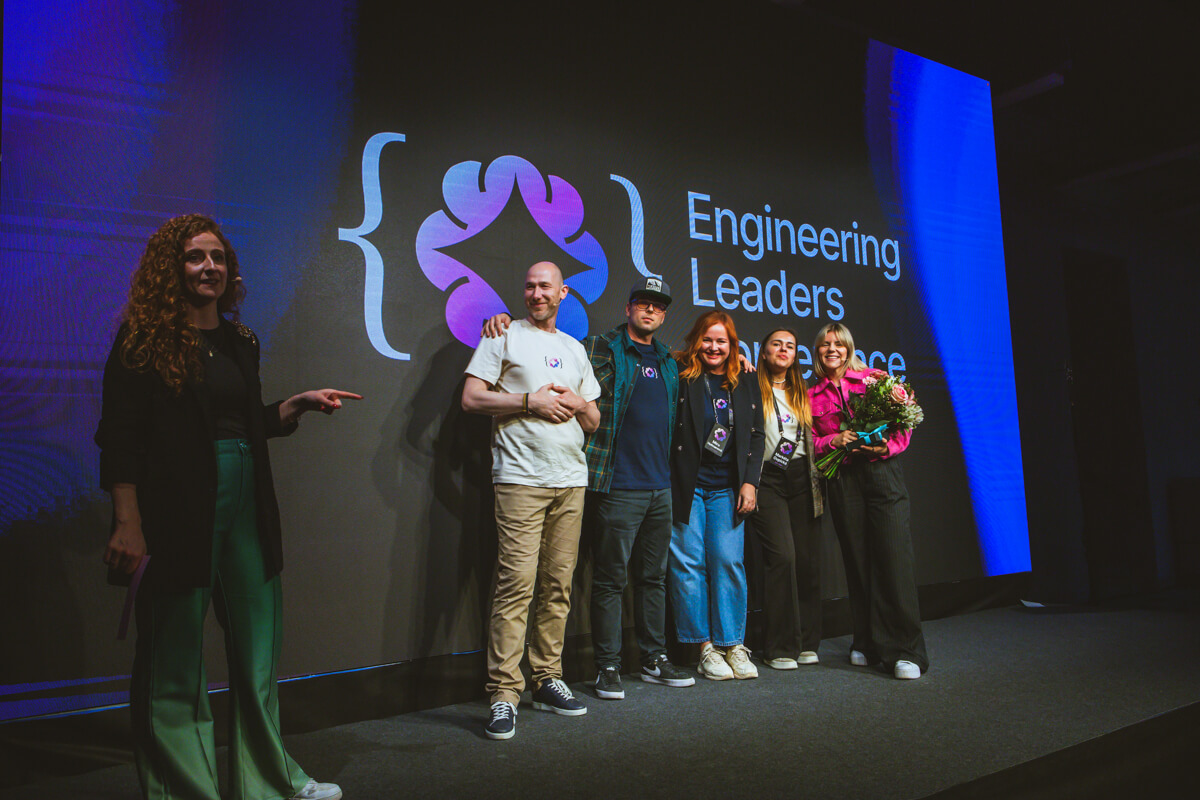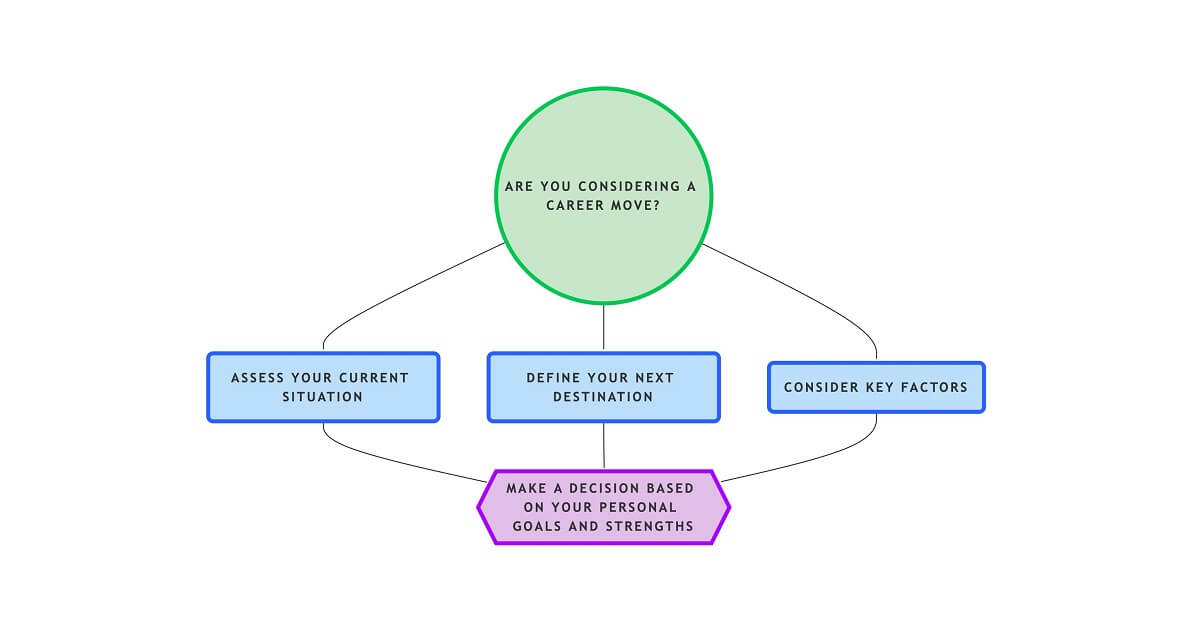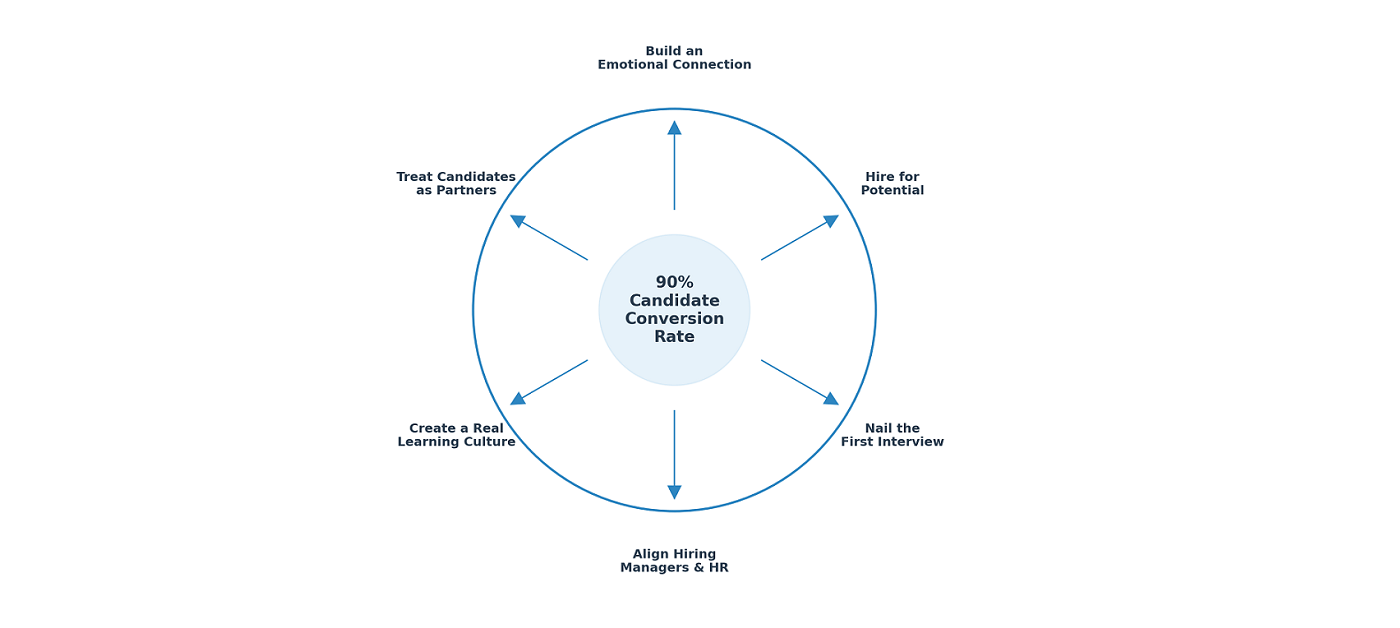Achieving a €300,000 with My Central European Software Engineering Leadership Venture.
July 2022–23 Data
Mentoring
- Volume: 317 mentoring sessions billed across 26 diverse mentees from 16 distinct companies or individuals.
- Funding: 19% ? self-fund their mentoring sessions.
- Global Reach: Majority (64%) from the Czech Republic, followed by 12% each from US & Slovakia, 6% UK, and 3% each from Poland & Israel.
- Conversion: 76% post-introduction client conversion rate.
- Feedback: 9.03 score since feedback gathering started in Jan 2023.
- Composition: 52% debutant engineering managers, 19% mid-level managers, 29% at CTO/CPO ranks.
- Remote: 93% sessions online via video.
- Duration: Maintained an average of 7.3 months of cooperation.
- Inbound funnel: 74% word of mouth, 17% social media, 9% website.
Advisory
- Volume: 79 days billed in 3 firms.
- Scope: Engineering metrics, internal audits, due diligence, structural shifts, career frameworks, and agility.
- Contract duration: 2–6 months. Rate: EUR 1550–2100/day excl. VAT. Inbound funnel: 100% word of mouth.
Phase 0: Pre-Launch
My last full-time role was a VPE at Mews, where I helped the company survive the heavy Covid impact, stabilize the RnD, multiply the headcount to over 100 engineers, building a new team every month in the last year of my engagement while keeping the roadmap delivery completion over 80%+ quarter by quarter.
We turned engineering teams into a differentiator: ammunition that blasts, defeating competition and helping the company reach series C investment.


I’m an introverted person deep in my mind.
I push myself to polish how I talk and listen. The 16 personalities test highlighted that I have a “Doctor/Defender” personality, which guided me towards my niche. I’ve felt my best when helping or earning the trust of people around me.

I have a Computer Science degree, which appears to be a striking asset. It’s my bridge to tech experts and math-brain CTOs. I get the tech world as I was that geeky coder for a long time. I can dive into technical talks, review the code, or whip up a prototype.
The most precious career investment I have preserved for two decades is a strong learning routine.
It’s described in my older Learn or Die blog post in HackerNoon. I have stuck to it for ~22 years. I set aside 4–8 hours a week to dive into my curated source of wisdom, mostly blog posts, podcasts and newsletters.
It’s my way of keeping my knowledge fresh. I assembled a purely technical scope for the first ~14 years. As time went by, I progressively moved to leadership and management topics.
Phase 1: Fueling
In April 2021, I took a leap with the world under a pandemic’s shadow. I launched a Czech Engineering Leadership meetup to gain and share our wisdom. I purposely made the meetup private to keep the audience small and invited only people with something unique to add.
Although we had to meet virtually, our connections became strong. We ran a series of monthly sessions until we were free to walk in public again.

That’s when I decided to step out of my introverted comfort zone even more. Inspired by Jan Meissner, I ventured into the world of blogging about leadership on our company’s tech site. I recall writing my first blog post, “Building Trust with Engineering Teams”, which took 11 long evenings. Soon, I discovered writing to be my canvas and weapon, helping me untangle my thoughts.
Phase 2: System Check
Back in 2021, my ex-boss, Honza Široký, planted a seed in my mind. He suggested I spread my mentoring wings with PlatoHQ. I embraced this idea for over two years. In addition, I decided to try facilitating a series of PlatoHQ circles with 12 people in the class.

The more engineering teams I led, the more I had the urge to support my line managers. I began giving extra hours, coaching both within and outside our department.
Consequently, I set up a New Team Lead Growth Programme (NTLGP) to build a strong management foundation in three months. I didn’t want to sit and wonder who among my managers would thrive or struggle after two years, especially in the period of steep hiring, while guaranteeing 80%+ quarterly roadmap completion with my teams.
Phase 3: Ignition
My Aha! moment emerged when one of my past PlatoHQ mentees said he desired to keep our sessions going and pay for them when I decided to leave PlatoHQ due to their zero compensation policy in 2022.
My heart raced with excitement and wonder the day I got my first payment. In seven weeks, I had three more clients from my close network.
By mid-2022, things got tricky for me. I juggled my day job with evening coaching. I saw the worry in my wife’s eyes. I was a millimeter close to burnout. I had to choose. Staying in the middle felt like a never-ending struggle while I was looking for the right moment.
Simply put, I had promising signs in coaching, but deep down, I doubted my abilities as a solo founder.
My Defining Moment

Fast forward to June 2022:
- Current job: I was in a VPE job at Mews I loved.
- Evolving side gig: I dedicated my time to mentoring four billable clients in the evenings. Inside, I felt a pull, a desire to build my own venture for six months as an experiment. But, many questions kept me awake. Am I really capable of helping all the mentees?
- New offer: I drew one more card: To validate my market value, I ended up with a new offer on the table: ~230k EUR/y compensation package (salary, bonus, stocks) for a full-time division lead role in the Czech Republic.
Half of the family relatives advised me to stay on the trajectory of a regular job due to emerging challenging times (RU-UA war, living costs skyrocketing). They were excellent in constructing plenty of excuses for why not to start. The other half was supportive.
In the meantime, I did a lot of networking and met loads of people. I did a lot of research regarding the market fit and possible strategies. Soon enough, I realized there are many significant names on the scene with different tactics: mainly, the ones who get famous for a single topic, those who are unbelievably active on social networks, those who refurbish, or those who sell books or certificates.
Due to my learning habit, I read tons of solid blog posts and newsletters. Seeing
- how Gergely’s Pragmatic Engineer newsletter has traction,
- how inspirational and to the point writing from Will Larson’s Irrational Exuberance can be,
- Jade Rubick’s weekly newsletter courses,
- John Cutler’s Beautiful Mess and his spot-on scenarios,
- and many others,
it all signaled to me there is a way. I find their approach to offering unique ideas and perspectives, with a more balanced social presence, close to my nature.
One morning, I made a leap while listening to podcasts during my Saturday routine. The podcaster, Ondrej Kobersky ??, was talking about stock investment and, more specifically, why timing the market (when to buy or sell) is a poor idea.
It clicked with my venture situation of waiting to gain a competitive advantage instead of persisting to invest regularly despite unfavourable indications. Iterative discovery.

It confirmed my beliefs, and I made my lifetime decision in a second.
First, I burned the bridges behind me (Art of War).
I mutually agreed to part ways with my current job and turned down an attractive offer. A path towards a coaching venture was the only one existing.
Disclaimer: I had saved up some extra money by selling a proportion of depositary receipts (similar to stock options) I earned during my ~3 years as a VPE.
Phase 4: Liftoff

Once I set up my company entity, I spent a lot of time talking to colleagues, friends and possible clients. Most of the conversations weren’t about closing deals immediately, but everyone I met strengthened my network.
Wall in My Head
Soon enough, I hit the reality of my incompetence. While finding the first four clients was relatively easy due to existing relationships, I failed hard to attract more.
It felt like I was weighed down, holding myself back. I think my lack of confidence showed.
I wasn’t sure what I was offering, and people could see that.

Finding Inner Peace
There’s a lot of advice out there about improving others — your team, your direct report, your strategy, your family. I was so caught up in it that I had no time to stop, look in the mirror, naked, and reflect on myself. I had to learn it.
That is why I decided early enough to find my own coach.
I was happy to find Joel in my network. He’s been keen to expose the details and the reality of his own journey as a well-established engineering leadership coach. He hasn’t given up on me and kept pushing me so that I find answers in my most blurry areas, mainly where my lack of confidence and fear of hypothetical failure was coming from.
After discovering the root cause and applying the fix on my own, I witnessed my “Father, the sleeper has awakened” Dune moment.
In six months, I made a leap from “I’m worried what a client could come up with” to “I hope a customer comes up with something unique or challenging”.
Initial Improvements
In addition, I decided to take a step back and boost my way of working. I improved the tactics in how I searched for clients, and I mastered my introduction sessions.
I tailored a website on my own, added coaching and advisory guides and my wisdom of knowledge on my site. Most importantly, I started to pay extra attention to the tone of my voice from recording myself.
Gamechangers

There were two determining moments taking place:
- I was chatting one day with my friend, Roman Pichlík (SVPE at Ataccama), who’s famous for running one of the most popular tech and venture czpodcast in the Czech Republic. He got curious about the whole mentoring thing I was into. Together with his pal Filemon (TopMonks founder), they had me on their show to chat about what I was up to. I did my best to explain my mentoring purpose, motivation, and how it works. It was a blast generating the first wave of clients.
- In parallel, I met David Peknic, CTPO at kosik.cz. He needed to boost engineering teams across the company by providing them with a way to identify their potential drawbacks. We agreed on their situation’s most useful engineering efficiency metrics and tailored a solution using Jira, Keboola, and Tableau. Due to my decadent experience in building and adopting such dashboards, we closed a 3-month fractional contract, and my advisory stream was alive. Moreover, David pointed me to a pretty decent book, The Almanack of Naval Ravikant, that helped me to steer my thoughts around solo entrepreneurship.

My Market Value
Soon enough, I ran into a different issue: Although my advisory work was valued well, my mentoring fee was two times lower than my market price. I didn’t want to subsidize my venture from savings.
Therefore, I made a decision to move big from EUR 150 an hour to 300.
Due to my introverted mind, I was not sure how to approach it. Moreover, it felt risky with the RU-UA situation and companies trying to reduce costs. After explaining the price increase to my clients, I lost 2 out of 13. Another one decided to meet less often.
The majority of customers saw the value in what I provide and understood the significance of investing in their managers for the long run.
Phase 5: Engines at Full Thrust
I reached a level when my calendar was full. However, I knew I had to do more to optimize the business.
My Positioning
Marketing specialists have advised me to copy the proven path and get traction through an extensive daily presence on social media, including their support. I understand the importance of visibility.
However, I don’t believe copying the success stories of the most exposed professionals guarantees success for my own journey.

If I were a Product Manager and just mimicked what my competitors did, wouldn’t that leave me trailing behind them?
Above all, I don’t think cloning how other people work could bring me joy. I was hungry to find my own path.
My “Mentoring 1+2+2 Triangle” Strategy
I’ve discovered the following combo works best for me:

- Learning: I invest one day a week into learning: reading loads of material, blog posts, writing, listening to podcasts, or speaking at various events, meetups, conferences, podcasts, and panel discussions.
- Mentoring: I dedicate two days a week to 1-hour coaching sessions, 3–4 sessions daily. The rest is preparation and operational work.
- Advisory: I spend two days weekly as a fractional advisor/CTO.
I believe this piece puts me in an unbeatable spot.
A combo of mentoring (talking experience), advisory (putting things to practice and gathering feedback), and continuous learning (cultivating my knowledge) is my third eye.
It is tempting to abandon my learning day to earn more.
Taken from an opposite angle:
- It is tempting to abandon my learning day to earn more, but I believe I’d shortly end up talking about waterfall, mainframes and agile manifesto.
- If I give up on mentoring, I will weaken my network and individual leadership.
- If I leave advisory, I will have zero opportunity to experience different situations and various client models to learn from and talk theory with no actual practice in the field. In essence, seeing what clients have built widens my knowledge.
Components of My Conversion Rate
I learned not to sell victory, but how it feels to reach victory.
I recall a similar situation of being an interviewer interested in a candidate. I learned to gain a competitive advantage by selling not only what the work is about but also how it feels to work in this company and under my leadership.
Potential clients make decisions upon feelings, not logic.
That’s why I changed my tactics regarding introductions: I focus on identifying what situations drive people to pick a mentor and use them in their stories. I work with these scenarios or their variations to create a hook:
- For a first-time manager, I mostly apply the “I have no confidence. I want to stand on both feet” story. Then, I guide them through the New Team Lead Growth program I’ve built.
- For a direct manager of a mentee, I use “To set them up for success in 3+ months, instead of letting them sink or swim for two years.” Think of the cost of delay.
- For a mid-manager: I want them to “Move away from being busy/operational to thinking strategically”. Start focusing on what matters the most.
- And what do CTOs/owners look for? “You feel alone in your thoughts, squeezed between two stones. Executive management asks you to hit the goals while your teams ask for help.” Simply put, they need a friend to talk to. They wish to validate their ideas and get help from outside to execute their improvements, including persistent adoption.
Bonus: Most probably, if a client says, “I’m not sure my current job is the right place”, they’re looking for someone to confirm their feelings. In their mind, they’re screaming: “Help me land a new job. Guide me in the first 3–6 months.” Typically, they look for someone who pushes them hard from the outside to “burn the bridge”.
Another experiment that paid off was sending summary and call-to-action emails to clients right after the intro session.
In addition, I clearly defined my differentiators, explained below.
These enhancements skyrocketed my client conversion rate in a few months.
My coaching calendar got full.
My Differentiators

- Strategy: My “mentoring triangle” allocation explained above is the foundation I rely upon in the long run.
- Mentoring vs Coaching: I don’t position myself strictly as a mentor XOR coach. In my experience, there’s a large overlap, and I harness the strengths of both techniques. Especially at the start, I lean more towards mentoring, the reason being clients usually come with pressing issues, seeking immediate solutions on the spot. They’re not keen to wait for potential solutions to be exposed at the fourth session of open questions. I listen closely, ask questions for clarity, and provide a piece of situational advice, including action items. In parallel, it helps us gain mutual trust as opposed to losing momentum. Once we’ve fixed the rough spots of disturbance, I progressively shift towards coaching, with emphasis on our north star.
- Location: No doubt I benefit from the fact the current competitive density of mentoring and coaching services specialized in software companies leadership is more sparse in Central Europe compared to the West or US. Nevertheless, I know there is more to offer. First, I understand the local cultural environment well, which helps me adopt a so-to-speak “American approach” in my region. Second, people tend to talk to a person native in their language.
- Traction: The technical background I have is an asset. I don’t position myself as a generic business consultant. I don’t follow the dress code. I trust the “doing rather than talking” approach. If I hear “We’re incapable of doing X” for whatever reason, I assemble a written proposal on the same day, or I wear my coding hoodie, run an IDE and build a “proof of concept” and forward.
- Pay as we go: I seek no forward contracts. We stay on track until the client and I are happy with the progress and the outcomes. This approach is fairer and gives both sides more freedom to act accordingly. I met zero clients not paying an invoice in my territory, although I have to chase them occasionally.
- My signature: This is the wow factor in what I do. I make changes persistent, ensuring the adoption of a change is widely accepted, as opposed to seeing ruins two weeks after I move on. I put extensive effort into gaining trust and prepared a well-tailored battle plan first.
- Feedback loop: In mentoring, I update their direct managers regularly about our progress. In advisory, I broadcast a weekly summary of my work to keep people engaged and things on track in a transparent manner.
Phase 6: Orbit Parking

My Principles
- Transparency: My reputation means everything to me. I don’t play games or twist my words to sound better. I am straight with the clients in my talks. Many clients come to me because someone they trust told them about me. People in the software world are smart and can see through superficial marketing.
- Continuous Improvement: If a client brings up a new situation I’m not sure about, I dig deep to understand it. I research using my trusted sources and build written notes. This way, I get myself ready if a similar topic comes up again in the future. Every night, I think about my day and what can be improved and put a few thoughts down on my list.
I would not succeed without principles or strategy in place. They are a catalyst I rely upon and make me stand out from the crowd. Elements of tactic and timing are crucial.
Mentoring Lessons Learned
- Limits to my energy: Doing more than 3–4 mentoring sessions a day drains me. They feel as intense as interviews. I learned this the hard way. Being an introvert, I often retreat to my cave afterwards.
- Valuing my time: If a mentee doesn’t seem committed or skips their small homework assignments regularly, I terminate our sessions. I’m 43, and time is a precious asset to me. If I cannot find dedication and joy in what I do, I’d rather be with my family or helping my son with his studies.
- Self-motivated learners: Mentees who approach me directly, not through HR or a manager, do better. They’ve been thinking about reaching out for a while, and taking action sets them apart.
- Personal investment matters: The folks who pay for my mentoring out of their own pockets are super driven. They hang on to every sentence, looking for value.
- Streamlining my process: By setting clear guidelines upfront and publishing them on my website, I’ve cut down a lot of repetitive work. It saves time for both sides.
- Learning to say “no”: I’ve turned down two offers even if it meant less income. Whether it’s a big company that doesn’t align with my values or a mentee who shows red flags, I’ve learned to trust my gut as opposed to damaging my beliefs.
- Becoming a listener: I used to jump in with solutions right away. Now, I hold back, listen more, and understand better. The clearer picture I get from a client, the better I can guide them.
- Customer journey: I learned to treat mentoring service as a functioning entry point to the client company. Either the company witnesses the impact of mentoring and wishes to expand the number of their managers in mentoring. Or, the other direction is, as we get to know each other and the situation in the company more, I turn into an advisor to help them execute and reach a specific goal.
Advisory Lessons Learned
- Multiple on-site clients: I quickly realized taking on more than one on-site advisory client at the same time was chaos. Too much swapping between tasks and topics, and it was a tough lesson with sleepless nights.
- Not starting from the middle: It makes a huge difference when I really get to know a client from the ground up. Besides the assignment, when I get adequate space to understand the business, vision, and scope, and have an opportunity for informal chats with stakeholders, my work is more effective.
- Expertise: No way could I provide an upper value if I had no extensive knowledge outside of my engineering bubble. Specifically, it covers product management, company leadership models, and HR, including decent knowledge of finance, GTM strategies, M&A and marketing. A good example is engineering delivery, where the root cause of potential inefficiency could lie in product management, continuous discovery, or the disconnect between the roles. We want the teams to fire with well-prepared ammunition.
- Contracts: I openly communicate I’m not looking for long-term contracts to squeeze the client. Instead, I act fast. I embrace the current situation and gain trust through “doing over talking”. Then, I execute the demanded assignment while paying particular attention to adoption. I pass the finish line with a wow factor, and move on to the next client with a positive reference and an expanded network.
- Unproductive environments: I’ve been burned before trying to help companies that lacked product strategy, had a tense atmosphere at the top, or were just stuck in inertia, mostly due to their size. Now, I use these factors as a sort of “health check” consideration before diving in.
- Dealing with rejection: In May 2023, I missed out on two big deals in a week. It was a blow. I felt crappy. Instead of wallowing, I took a step back, reevaluated my approach, and refined my pitch once again. Plus, rejection is a natural part of the business.
- Being transparent: I’ve learned that I need to be straightforward with my insights, even if it might surprise or upset some people. Being clear helps the message get through. I experience true managers appreciating honesty over my attempt to sound more reassuring and hide the truth between the lines.
Phase 7: Coasting
Was my first year going solo a complete win? I’d love to say “yes”, but that’s not me. I’ll say: “It’s been a good start.”

By early 2023, I felt a newfound level of confidence. My calendar was packed, and 70+% % of those interested in my services said “yes”. Now, I’m operating at full throttle, with available slots taken. I recommend fellow European mentors I know or add people to my waiting list. The list isn’t very long, though.
I’ve found a calm within. It’s like floating in space, weightless and grounded, no matter what challenges come my way.
Phase 8: Ejection
When it comes to my plans for the next 12 months, I have four goals:
- Giving back to the community: I’ve recently taken the reins to revive my Czech engineering leadership meetup, moving from a virtual form to an on-site one. In fact, we have our upcoming gathering lined up in beautiful Prague on September 7th.
- Pioneering: I will validate and pilot a product idea I have regarding software companies learning boost.
- Quality connections: I will grow my network by emphasizing quality over quantity, reducing the proportion of nice-to-have chats with a blurry value. Time is an asset.
- Stage presence: I will speak at two more dedicated conferences.
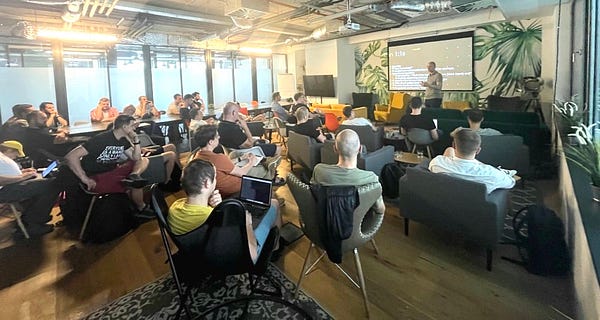
Bonus: On a more personal note, my internal goal is to eliminate my tiny verbal imperfections. In particular, I have the urge to fill the silence in my talks by adding a “hmmm” noise, which is disturbing.
The scalability or passive income goals are off my plan for now. I’m leaving it on my to-do list for the following season.
Space in Balance
I wish I could have read this article a year ago, parked my mentoring spaceship in orbit, witnessed the progress and found my inner peace a bit sooner.
I share my adventure in the hope it can help someone in a similar situation to see things from a different angle and learn from the surprises I’ve been through.
If I succeeded ? in seeding one idea worth considering in your mind, ping me or buy me a beer ? to make my day ?
Credit
I’m grateful to Jade Rubick for taking the time to read and thoughtfully review my blog.


